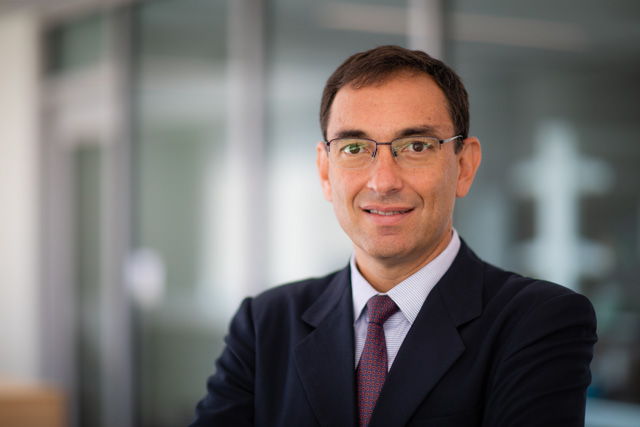8 January 2024–The characterization of uncertainty has been a theme of Adrian Rodriguez-Marek’s career as an earthquake engineer. “That was something that I was interested in from the very first time that I got into hazard analysis,” he explained. “When it comes to ground motion prediction, as a layperson you think that the more we know, the smaller the uncertainty will become.”
“But when you look at the trajectory of research, this doesn’t seem to be the case,” he added. “If anything, uncertainty seems to be growing.”
As a professor of civil and environmental engineering at Virginia Tech and as a consultant, Rodriguez-Marek has a strong focus on seismic hazard assessment, particularly “how we can predict site effects, and how to predict the effect of site conditions on ground motion,” he said.
Rodriguez-Marek said analytical models used by civil engineers to answer these questions sometimes work poorly, “and I think they work poorly because the process is too complex to be predictable.”
“But a lot of work has been done on this over the past 20 years,” he noted, “not so much reducing the uncertainty but better characterizing the uncertainty and better understanding the sources of uncertainty.”
He said one of the biggest changes in his field during the course of his career has been “the ability to use physics-based models for hazard predictions. That’s going to continue to evolve as computational power continues to increase.”
In his role as consultant, Rodriguez-Marek has performed seismic hazard analyses for power plants and other critical facilities. “The models we use for prediction tend to be ground motion prediction equations,” he says. “Those equations are not only based on statistical analyses of past data, they are informed by physical models.”
The amount of data Rodriguez-Marek and his colleagues use in modeling has increased exponentially in the past decades, he recalled. “I remember when I was finishing up my Ph.D., the [1999 Taiwan] Chi-Chi earthquake occurred, and the amount of ground motion data we had to work with as engineers, the strong motion data, pretty much went up orders of magnitude with that earthquake.”

Growing up in Bolivia, Rodriguez-Marek thought he might pursue a career in engineering but not necessarily earthquakes. “I enjoyed any time I was solving math or physics problems, so I thought I better choose a career that keeps me working on those problems,” he said. “I might have become a seismologist or geophysicist, but in Bolivia, engineering had a better job outlook.”
He was close with an uncle who was a geotechnical engineer, “so that was a strong influence, because he always talked to me about what he did and took me to his job sites,” he said.
When he arrived in Berkeley for his Ph.D., classes with Norman Abrahamson and Jonathan Bray lured him toward earthquake engineering. “The math is important because you’re dealing with dynamic systems, so I liked that. But also it seemed there were so many unanswered questions on the civil engineering side, related to seismic loading, that I immediately fell in love with it,” he said.
His research, teaching and consulting experiences operate in a good feedback loop. “Most of the research questions I’m working on today, they came out of consulting projects,” he explained. “If you’re teaching a class and you can tell your students, last week I used these equations or I was working on a project where I needed this information, they pay attention immediately.”
Rodriguez-Marek’s mentors had such a strong impact on him that “I thought maybe if I stay in academia, I can have a strong impact on other people,” he said. Many of his working relationships with his students have evolved into friendships over the years.
To be successful, he tells his students, “You need to have passion in what you do. If you enjoy what you do, then work is not a burden.”
Rodriguez-Marek has some passions outside of work, however, including road cycling and running. At a seismic hazard workshop in Los Alamos, New Mexico, he ran a little further than he was used to and nearly tripped over a rattlesnake.
“It was the scare of my life, so much so that my leg cramped and I just fell in front of the rattlesnake and had to crawl away rather than running away,” he laughed. “So it’s nice to have passions, but be careful!”
SSA At Work is a monthly column that follows the careers of SSA members. For the full list of issues, head to our At Work page.
